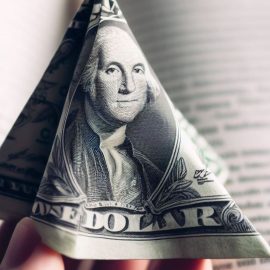

This article is an excerpt from the Shortform book guide to "Mediocre" by Ijeoma Oluo. Shortform has the world's best summaries and analyses of books you should be reading.
Like this article? Sign up for a free trial here.
Are you tired of seeing mediocre white men in positions of power? Have you ever wondered why this phenomenon persists in our society?
Mediocre, a book by Ijeoma Oluo, explores the concept of white male mediocrity and its roots in white male supremacy. She examines how this dynamic shapes American society, from politics to education to sports.
Continue reading for an overview of this book.
Mediocre Book Overview
It started as an internet meme: “God give me the confidence of a mediocre white dude.” But Mediocre, a book by Ijeoma Oluo published in 2020, takes the joke seriously, asking why many white men attain powerful positions despite unimpressive qualifications and results. Her answer is that US society is built around white male supremacy: the belief that white men are superior to all other groups and are therefore worthy of inherent privileges. Oluo contends that this pattern of privilege hurts everyone—including the white men it ostensibly favors. By tracing this pattern’s historical roots and present manifestations, Oluo seeks to explain what she sees as the failings of the contemporary US and to inspire readers to fight for a more equitable society.
Oluo is a writer known for her work on issues of race, gender, and intersectionality. She’s the author of 2018’s So You Want to Talk About Race, a guide to navigating the difficult conversations Oluo says we need to have in order to address systemic racism in the US. She’s also written for publications such as The Guardian, The Stranger, and Jezebel. In Mediocre, Oluo combines historical analysis and critiques of contemporary culture with observations from her own life.
Mediocre is structured as a set of discussions on interrelated topics rather than as a single, linear argument. We’ve reorganized this material into four parts in order to emphasize Oluo’s overarching logic:
- In part 1, we explain what white male mediocrity is and how it results directly from white male supremacy.
- In part 2, we discuss how white male supremacy shaped the US’s history.
- In part 3, we examine how white male supremacy has reacted to social progress by marginalizing and undermining women and racial minorities in an attempt to re-center white male interests.
- In part 4, we explore Oluo’s analysis of American football, which she says serves as a microcosm of the dynamics of white male supremacy and mediocrity.
Part 1: What Is White Male Mediocrity?
Oluo argues that US society is characterized by white male mediocrity: a phenomenon she defines as a pattern of unearned, unjustified privilege afforded to white men. She clarifies that she doesn’t think that all white men are mediocre—rather, she argues that society is structured to favor white men regardless of their merit, which makes many white men complacent while marginalizing everyone else.
We’ll explore the concept of white male mediocrity and explain why Oluo believes it harms everyone, including the white men it ostensibly favors.
How White Male Supremacy Leads to Mediocrity
Oluo suggests that white male mediocrity results directly from white male supremacy: the belief that white men are inherently superior to all other demographic groups. She says that US society reflects a belief in white male supremacy by allocating more power and status to white men in its political, economic, legal, and social systems.
According to Oluo, the US’s tendency to privilege white men leads to two major consequences:
Consequence #1: Marginalization of Other Races and Genders
Oluo argues that since white male supremacy holds white men up as great because of their presumed superiority to other races and genders, white male supremacist society has a vested interest in excluding from power anyone who isn’t a white man. Under this system, women and racial minorities are taught to stay out of the way and, at best, to aspire to white male ideals of greatness.
Moreover, Oluo says, the white male ideal is inherently problematic: Because it depends on enforcing a sense of superiority over others, white male supremacy tends to glorify and reward bullying, overconfidence, and prejudice. White male society has historically defended its power through violence, exploitation, and undermining the accomplishments of others.
Consequence #2: Complacency for White Men and Society
Furthermore, Oluo argues that the assumption of inherent greatness breeds individual mediocrity by suggesting that simply existing as a white man is an accomplishment. She reasons that when greatness is defined by race and sex rather than by one’s accomplishments, there’s no incentive to change or improve—certainly not when doing so would involve taking risks or inconveniencing oneself for the sake of society.
Similarly, Oluo suggests that white male supremacy makes society as a whole mediocre by creating an illusion of meritocracy. Our public and private systems are ostensibly built to hire, promote, elect, and advance only the most competent candidates. But in practice, Oluo says, these systems unjustly favor white men, whose presumed greatness gives them a greater chance of attaining power in the first place and holding on to that power even when they prove ineffective.
How White Male Mediocrity Harms White Men
Oluo says that in addition to the more obvious harm it does to people who aren’t white or male, white male mediocrity also harms the white men it’s designed to favor: While in theory, white male supremacy gives white men power and prominence, in practice, only a small proportion of white men actually receive these benefits. Most white men don’t actually inherit significant wealth or power—yet white male supremacy mollifies non-elite white men by implying that their turn will come and reminding them that in the meantime, they’re still better than everyone else.
The problem, Oluo says, is that most white men who don’t inherit significant power or wealth are unlikely to attain either—and when they become frustrated at not getting what they believe is their due, they lash out either at themselves or at minorities they believe have stolen their place. Oluo points out that suicide rates and instances of domestic terrorism are disproportionately high among white men. She reasons that both forms of violence are opposite expressions of a singular phenomenon: When white men are told they’re entitled to power and success they don’t actually have, they conclude either that they’ve failed (leading to self-directed violence) or that they’ve been wronged (leading to violence against others).
Part 2: The Dynamics of White Male Supremacy
Now that we’ve explained what white male mediocrity is, we’ll take a closer look at how its underlying cause—white male supremacy—came to be a dominant force in US society. According to Oluo, this dominance is characterized by an emphasis on violence and a monopoly on political and economic power.
A Mythology of Violence
According to Oluo, white American male culture is exemplified by the image of the cowboy—the rugged, violent conqueror who defends his independence at all costs and stands alone as the civilizer of the West. She argues that many white men, wanting to see themselves as heroes, take on the cowboy persona, which in turn causes them to look for enemies to justify their adopted sense of vigilance and aggression. She suggests that this persona explains why some white men are quick to see their Black fellow citizens as criminals or their Muslim fellow citizens as terrorists—sometimes with deadly consequences.
Oluo says that this cowboy persona is based on a myth contrived to gloss over the deliberate genocide of native peoples by casting the victims as brutal savages and the perpetrators as defenders of civilization. She gives the example of Buffalo Bill Cody, a 19th- and early 20th-century showman, hunter, and soldier. Cody initially came to prominence for his skill at massacring buffalo—a practice employed to starve the Indigenous American population who relied on them for food. He later gained widespread fame and success by creating an Old West stage show that celebrated his buffalo hunts and glorified incidents such as his killing and scalping of a young Cheyenne warrior.
Despite the US’s legacy of expansionist violence, Oluo argues, the cowboy persona is still especially prevalent in the modern-day American West, where it’s evolved into a variety of religious extremist, militia, and anti-government movements that emphasize white male sovereignty. She illustrates this contemporary extremism by pointing to the Bundys, a ranching family who staged several armed standoffs with the US government over their alleged right to graze their cattle on public lands without paying fees or respecting rules.
A Monopoly on Power
Oluo says that, in addition to claiming power by force, white male supremacy guards its power by excluding anyone other than white men from political and economic institutions. Oluo argues that this exclusion comes not necessarily from prejudice against other groups, but rather from a desire to keep white men at the center of society by eliminating competitors. For that reason, she says, when women—especially women of color—make headway in male-dominated institutions, the white male establishment meets them with ridicule and blame, accuses them of narrow self-interest, and may subject them to outright abuse and threats.
Tactic #1: Ridicule and Blame
According to Oluo, when women achieve (or seek) power in politics or the workplace, white men often respond by refusing to take these women seriously. For instance, Oluo gives the example of Congress member Shirley Chisholm, who in 1972 became the first Black candidate (and one of the first women) to run for a major party’s Presidential nomination. Oluo says that although Chisholm was an accomplished politician, some of the press dismissed her as a distraction from serious (male) politics and critiqued her appearance and dress. Oluo argues that these basic tactics persist today, when female politicians of color such as Alexandria Ocasio-Cortez are criticized for their appearance, youth, speech, and supposed political naïveté.
Similarly, Oluo says, women who break into male-dominated spheres like politics and business often become scapegoats. For example, during the Great Depression, some observers blamed record unemployment on an increased number of women in the workforce, implying that women had supplanted male workers—even though most of these women held “female” jobs like teaching and housekeeping.
According to Oluo, this tendency to blame women continues today: She says that frequently, when companies appoint women as CEOs, they often do so only out of desperation when the company is already foundering. And when the companies’ woes continue or worsen, the business world blames the female executives who, in reality, were set up to fail.
Tactic #2: Accusations of Narrow Self-Interest
Furthermore, Oluo claims that white male society guards its power by claiming that women and people of color are only interested in representing their own demographic groups and aren’t capable of looking out for the majority (meaning white men). For example, she explains that Chisholm built her presidential campaign on a platform of popular, mainstream progressive stances—yet she was dismissed as a candidate only for Black and/or female voters. Oluo says that a similar trend occurs in the business world when non-white, non-male executives are hired in part to make companies more diverse and inclusive—only to be vilified for their attempts to change company culture.
Tactic #3: Abuse and Threats
One final way Oluo says white male supremacy guards its position is by verbally abusing and threatening women and people of color who seek power. For example, Oluo relates that early in Chisholm’s campaign, a staffer going through airport security had a bundle of campaign flyers handed back with a racial slur written across them along with the admonition to “go home.” Sometimes, this kind of hate speech turns into intimations or threats of violence. For instance, Oluo cites an email sent to US Representative Rashida Tlaib (who is Muslim) celebrating a recent act of anti-Islamic terror and calling for more such attacks.
Part 3: How White Male Identity Reacts to Social Progress
We’ll examine how white male identity reacts when women and people of color gain a foothold in the arenas that were once exclusively the domain of white men. We’ll look at three historical and contemporary cases that, according to Oluo, demonstrate how white male identity attempts to maintain its prominence in the face of social change.
Case #1: Housing Segregation
Oluo argues that one way white supremacy pushes back against social change is by seeking to limit the scope of that change, as happened when Black people began competing for industrial jobs in the northern US after the end of the Civil War. Following the abolition of slavery, much of the South’s Black population migrated north to escape growing attempts to suppress their newly won civil rights. Oluo says that white northerners resented this influx of new job competitors and initially reacted with racist violence, as when a series of anti-Black riots swept through a number of cities in 1919.
Eventually, Oluo says, to protect their sense of white identity and to limit Black wealth and influence, many cities began adopting racially restrictive housing covenants—rules that prevent the sale or rental of a given property to people of color. According to Oluo, these covenants have had several long-term effects:
- They prevent many Black people from buying homes, which limits their prospects for building long-term, inheritable wealth and contributes to a racial wealth gap that persists today.
- They segregate cities into white and Black neighborhoods. Typically, Black people only have access to poorer, more crowded areas with fewer municipal services. This imposed poverty leads to worse outcomes and limits Black economic and political power.
- They make cities’ Black populations less visible, which allows white residents to benefit from Black economic contributions without having to encounter Black people much of the time—thus preserving the illusion of white exclusivity so central to white identity.
- They subject Black neighborhoods to racist policing that sometimes results in the needless deaths of Black citizens.
Case #2: Disavowal of Higher Education
Another way Oluo says white male supremacy reacts to social change is by disavowing institutions that were once (but are no longer) the exclusive domain of white men—as happened with higher education. Oluo says that American higher education was initially formed for the benefit of white men from wealthy backgrounds. She notes that these institutions made explicit efforts to exclude women as well as racial and religious minorities—efforts that extended into the 20th century until civil rights gains and affirmative action policies in the 1960s forced colleges to integrate.
Oluo says that, once higher education stopped being the exclusive domain of white men, it in turn became less of a marker of higher social status. She suggests that this loss of exclusivity is the real reason why many of today’s conservative politicians deride higher education for what they allege are its excessive costs and liberal bias.
Case #3: Co-opting of Marginalized Voices
One final way Oluo says white men react to social progress is by co-opting movements that seek equity for marginalized groups. She argues that white men are so used to being the center of attention that they balk at not being that center, which leads them to hijack social movements in order to reassert their significance. Oluo says that this hijacking typically occurs when white men join a social cause as allies only to push their own interests, exploit the people they purport to help, and eventually turn against the cause.
Oluo says that this pattern of join-undermine-abandon recently re-emerged during the 2016 US Presidential election in the form of “Bernie Bros,” a certain type of white male supporters of Democratic candidate Bernie Sanders. Oluo argues that Bernie Bros were white men who felt threatened by the growing prominence of people of color (such as outgoing President Barack Obama) and women (such as Sanders’s main Democratic rival Hillary Clinton). In Sanders, she says, these men saw someone who advanced progressive values while deliberately sidelining feminist, Black, and other minority viewpoints by insisting that the “real” problems facing the country had to do with class inequality.
Oluo argues that Bernie Bros’ dogmatic focus on class inequality—along with a pattern of bullying and aggressive behavior—constituted a hijacking of the progressive political movement in an attempt to re-center white male issues. She points out that most women and people of color were quite aware of socioeconomic inequality and didn’t need white men to point it out to them. Moreover, she argues that focusing exclusively on socioeconomic class dismissed problems facing women and people of color, such as reproductive rights and police violence.
Part 4: American Football as a Microcosm of White Male Mediocrity
Oluo ends by arguing that American football encapsulates the dynamics of white male mediocrity. She charts the sport’s evolution from a game for elite white college students to a multibillion-dollar industry (in the form of the National Football League, or NFL) that she says exploits and silences Black athletes. Along the way, Oluo suggests, white men have employed many tactics to maintain their control over a sport increasingly dominated by Black stars.
Preserving a White Monopoly Over the Game
Originally a collegiate sport, football was for a while a strictly white male pursuit. But as Black stars gradually won spots on college teams, Oluo says, the white male football establishment resorted to a familiar set of tactics intended to keep the game exclusively white. In particular, Black players faced racially motivated verbal and physical abuse. Oluo details several examples of early Black players who were deliberately targeted by excessive on-field violence—two of these men were hospitalized and a third was killed.
When Black players persisted in the face of these violent assaults, they were sometimes simply barred from playing. Oluo explains that some teams—particularly from schools located in the South—simply refused to play against teams with Black players, going so far as to voluntarily sit out their own star players in exchange for opponents leaving their Black players out of their lineups.
Similarly, although there were a few Black players in the early NFL, Oluo argues that the league established an unofficial color line between 1934 and 1946. She says the ban on Black players during this period was the brainchild of George Preston Marshall, the openly racist owner of the franchise formerly known as the Washington Redskins—“Redskin” being a racial slur against Native Americans.
Oluo says that Marshall pressured the rest of the NFL’s coaches and owners to exclude Black players from the league. The league gradually integrated in spite of his efforts, though Oluo says it took competition from the already-integrated American Football League and (in Marshall’s case) pressure from the federal government to make that happen.
Stifling Progress by Marginalizing Black Players
Oluo suggests that, whenever women or people of color establish a foothold within what was an exclusively white male domain, the white male establishment looks for ways (such as housing covenants) to limit and undermine that progress. Since the NFL integrated, Oluo says, a similar pattern has emerged in football: Instead of trying to exclude Black players, the white football establishment now attempts to limit their political power within—and beyond—the sport.
For one thing, although the NFL now accepts Black players within its ranks, it seldom offers them coaching or front office positions, instead reserving that power for white men. Oluo points out that while the majority of the league’s players are Black, few of its coaches, fewer of its GMs, and none of its team owners are. Oluo argues that this racial imbalance contributes to an exploitative labor environment in which Black people are allowed to do the dangerous physical work of playing the game, but are rarely allowed to help administrate the sport or otherwise represent their own interests.
Furthermore, Oluo says that the football establishment has sought to limit Black political power beyond the game itself. She argues that the league’s response to Black-led political activities—such as kneeling during the national anthem to protest police violence, which got former quarterback Colin Kaepernick blacklisted—is an attempt to silence Black players’ political expression in order to protect white identity and power. Additionally, she says that the NFL’s opposition to a peaceful Black political movement is just one demonstration of how much the white male establishment (in football and elsewhere) fears Black advancement.

———End of Preview———
Like what you just read? Read the rest of the world's best book summary and analysis of Ijeoma Oluo's "Mediocre" at Shortform.
Here's what you'll find in our full Mediocre summary:
- Why underqualified white men are in powerful positions
- How toxic white men have reacted to social progress
- The presence of white supremacy in American football






